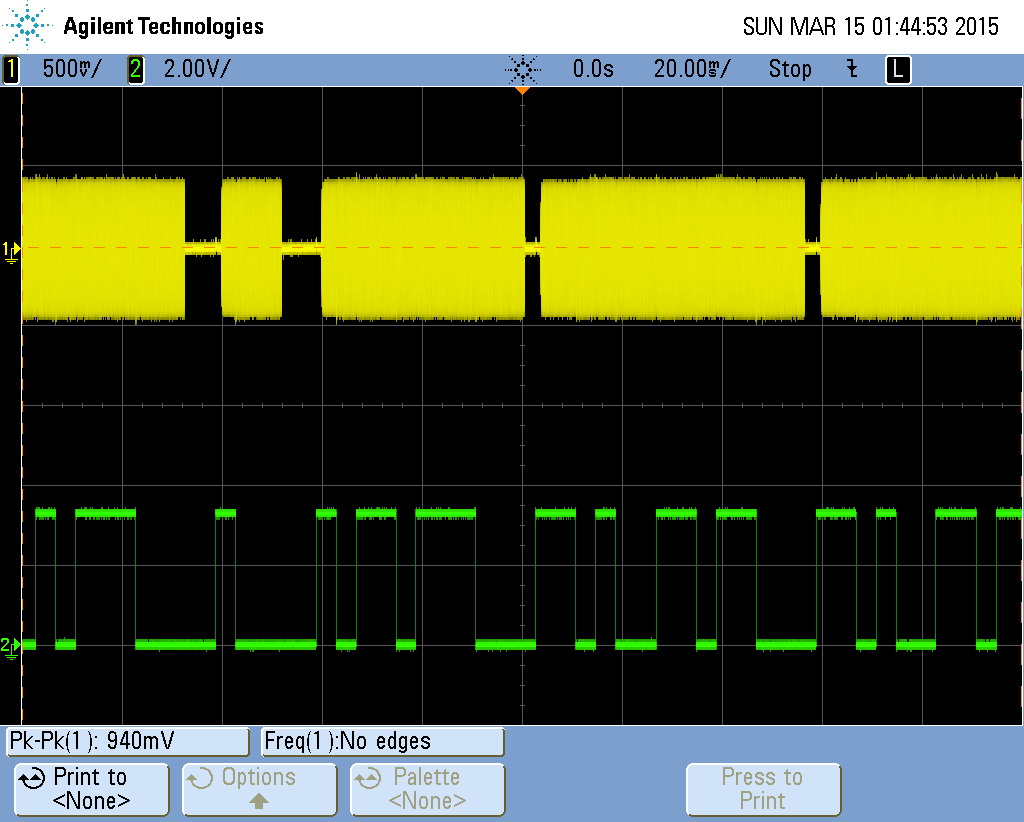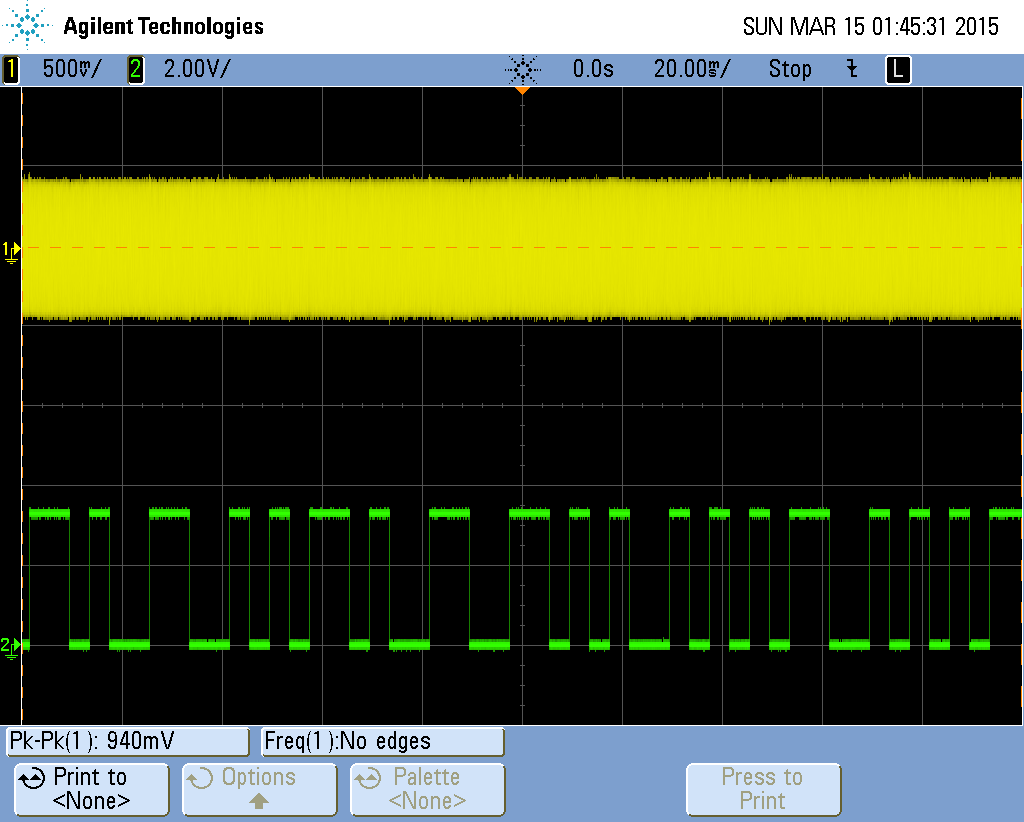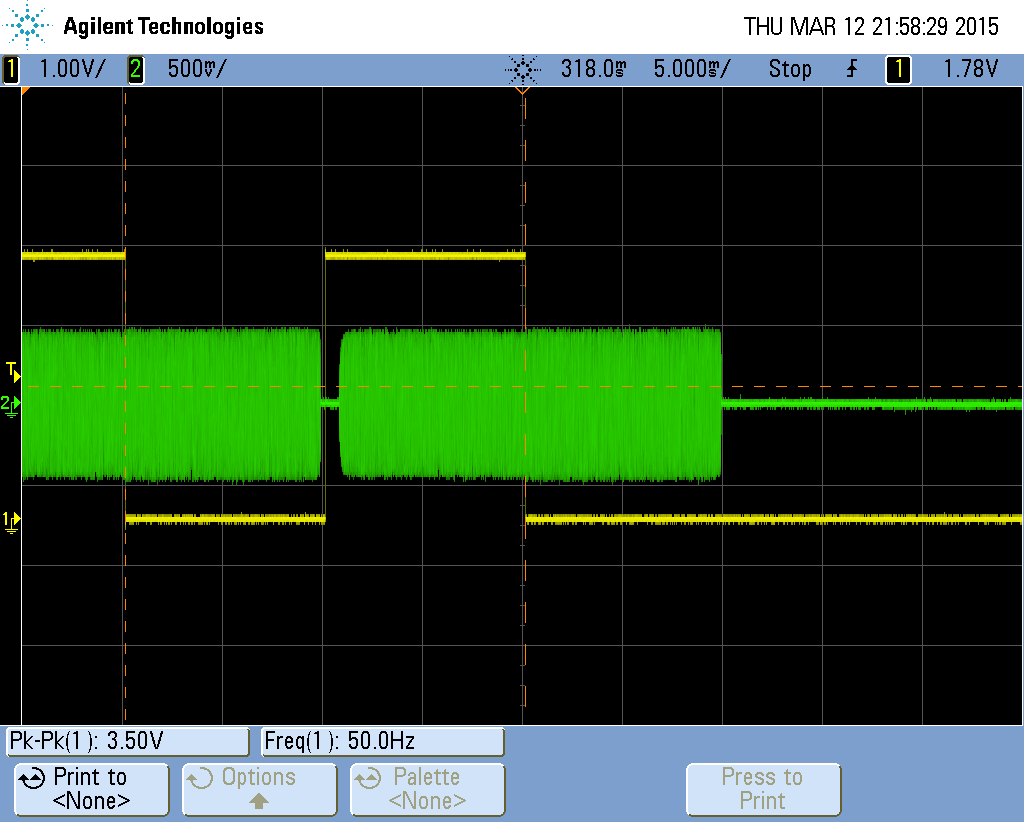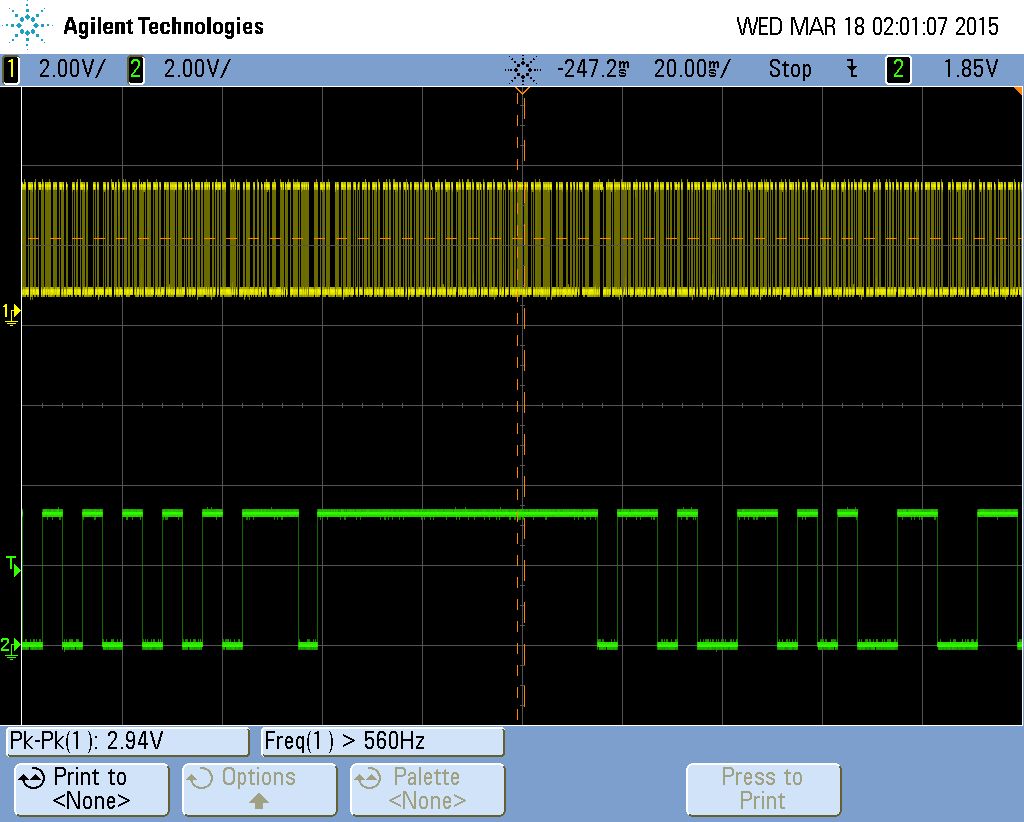Tests at the laboratory¶
- Table of contents
- Tests at the laboratory
During the phase D of the mission (Assembly, Integration and Test), actives are performed to integrate all subsystems which have been already validated by unitary tests. After assembling the subsystems, integration tests must be carried out in order to validate that the main system (i.e. the set of subsystems and their interconnections) behaves as expected.
Comparison of the RF transmitter performance with and without Manchester encoding¶
Figures A and B show the modulated binary signal which control the RF transmitter (green trace) and the signal at the RF output of the transmitter (yellow trace). Figure A shows the case when no Manchester (L2) is used. In the other hand, figure B shows the case when Manchester encoding is implemented.
As we can see, the RF output signal is shut down when a binary 0 is set at the transmitter input lasting more than 9.8 msec. without Manchester. In addition, when using Manchester encoding, the RF signal is not cut and the 2-FSK modulator operates properly. Figure C, shows with more details when the transmitter switches off its oscillator.

Fig. A: Input (green) and output (yellow) signals of the RF transmitter without Manchester encoding at 125 bps.

Fig. B: Input (green) and output (yellow) signals of the RF transmitter with Manchester encoding at 125 bps.

Fig. C: Measurement of the time that the RF transmitter takes to power off its oscillator.
Analysis of the communication signals at interfaces between Motherboard, GPS module and RF transmitter.¶
Figure D shows the modulated binary signal present in the interface 3 (Motherboard-RF transmitter) with green traces and the signal at the USART bus in the interface 2 (Motherboard-GPS module) with yellow traces. For more details of the subsystem interfaces, refer to section System integration.
From the capture, it is easy to find that the baudrate at the USART bus is much higher than the baudrate at the signal controlling the RF Transmitter (9600 bps vs. 125 bps). In addition, it can be appreciated the shape of the modulated binary signal with Manchester encoding and the synchronization sequence at the beginning of the message.

Fig. D: Signals at the USART bus (yellow) and at the input of the RF Transmitter (green).
Further tests¶
Further tests have been carried out with the developed receiver as explained in section Receiver implementation. This set of tests have been done indoors and outdoors in order to evaluate and validate the communication chain performance and the GPS fix data (GPGGA) quality and integrity.
